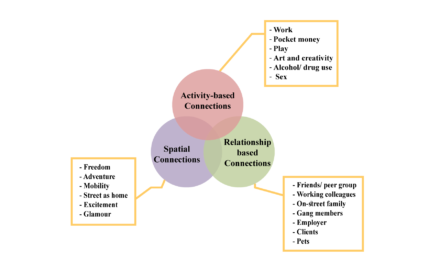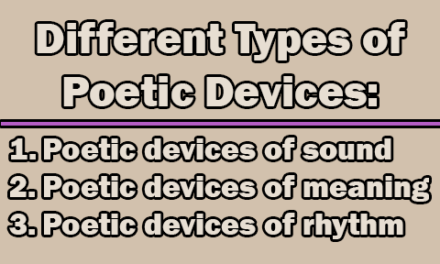Mastering the Art of Narrative Writing:
Narrative writing is a captivating form of expression that allows individuals to weave stories, whether real or imagined, into a structured and engaging narrative. This genre encompasses a wide range of possibilities, including nonfiction, fiction, historical fiction, and semi-autobiographical tales. In this article, we will explore mastering the art of narrative writing including purposes, elements, types, and tips.
What is Narrative Writing?
Narrative writing, often referred to as story writing or creative writing, involves the creation of a story with a consistent plot, characters, and themes. The primary aim is to convey viewpoints, ideas, and experiences that captivate and motivate the audience. Whether factual or fictional, narratives serve to inspire, instruct, or entertain, maintaining a narrative structure throughout.
Purposes of Narrative Writing:
Narrative writing serves various purposes, and its versatility allows writers to achieve a range of goals through storytelling. Here are some primary purposes of narrative writing:
1. Entertainment: One of the fundamental purposes of narrative writing is to entertain readers. Engaging stories, whether fictional or based on real events, provide enjoyment and escapism.
Example: Novels, short stories, and films crafted for the sole purpose of captivating and entertaining the audience fall under this category.
2. Education and Instruction: Narratives can be used as a powerful tool for education and instruction. They are employed to convey information, historical events, or cultural practices in an engaging and memorable way.
Example: Historical fiction, biographies, and educational storytelling in various media formats aim to inform and instruct while maintaining the audience’s interest.
3. Inspiration and Motivation: Narrative writing can inspire and motivate individuals by presenting stories of triumph over adversity, personal growth, or achieving goals.
Example: Biographical narratives, success stories, and motivational anecdotes are common forms of narrative writing that aim to uplift and inspire readers.
4. Reflection and Self-Discovery: Personal narratives, reflective essays, and autobiographies allow writers to explore and express their own experiences, emotions, and self-discoveries.
Example: Journals, memoirs, and personal essays often serve the purpose of introspection and self-reflection, inviting readers to connect with the author’s personal journey.
5. Cultural Preservation: Folktales, myths, and traditional narratives play a crucial role in preserving and transmitting cultural values, beliefs, and identity from one generation to the next.
Example: Folklore, legends, and cultural narratives are essential components of preserving a community’s heritage and passing down collective wisdom.
6. Emotional Expression: Narrative writing provides a medium for writers to express and convey a wide range of emotions. Whether through fiction or personal experiences, writers can evoke empathy, sympathy, or understanding.
Example: Emotional narratives in literature, poetry, or personal essays allow writers to share their feelings and connect with readers on an emotional level.
7. Persuasion and Advocacy: Narratives can be used to persuade or advocate for a particular viewpoint, cause, or social issue. By weaving stories, writers aim to influence opinions and evoke a response.
Example: Advocacy stories, persuasive essays, and narratives in advertising often employ storytelling techniques to make a compelling case for a specific idea or action.
8. Imagination and Creativity: Narrative writing encourages the exploration of imagination and creativity. Writers can create fantastical worlds, characters, and scenarios that transport readers to entirely new realms.
Example: Fantasy novels, science fiction, and speculative fiction are genres that thrive on imaginative narrative writing, allowing authors to invent and explore alternative realities.
Components of Narrative Writing:
To create a compelling narrative, writers must incorporate several key elements:
- Plot:
- The plot is the backbone of any narrative. It refers to the sequence of events that unfold throughout the story, driving the narrative forward and providing structure.
- A well-constructed plot typically consists of key elements, including an exposition (introduction of the story and characters), rising action (events leading to the story’s climax), climax (the highest point of tension or drama), falling action (events following the climax), and resolution (the conclusion of the story).
- Characters:
- Characters are the individuals who inhabit the narrative, giving life to the story. They undergo development and change as the plot unfolds.
- Well-rounded characters have distinct personalities, motivations, and flaws. The protagonist is the central character, often facing challenges, while the antagonist opposes the protagonist’s goals.
- Supporting characters contribute to the narrative’s depth and complexity, each serving a unique role in advancing the story.
- Setting:
- The setting establishes the time and place where the narrative unfolds. It creates the backdrop against which the characters interact and the events take place.
- A vividly described setting not only enhances the reader’s immersion but also influences the mood and tone of the narrative.
- Settings can range from specific locations, historical periods, or even fantastical realms, depending on the nature of the narrative.
- Conflict:
- Conflict is a crucial element that introduces tension and obstacles into the narrative, compelling characters to take action and evolve.
- There are various types of conflict, including internal (within a character’s mind), interpersonal (between characters), and external (character against an outside force or circumstance).
- The resolution of conflict often contributes to the overall message or theme of the narrative.
- Theme:
- The theme is the central idea or message that the narrative conveys. It encapsulates the broader meaning or purpose behind the story.
- Themes can be explicit or implicit and may explore universal concepts such as love, sacrifice, power, or morality.
- A well-defined theme adds depth and resonance to the narrative, providing readers with something to reflect upon.
- Tone:
- The tone refers to the author’s stylistic decisions that shape the overall mood and atmosphere of the narrative.
- It influences how readers perceive the events and characters in the story. For example, a narrative can have a lighthearted, suspenseful, or melancholic tone.
- The tone contributes to the emotional impact of the narrative, guiding the reader’s response to the unfolding events.
- Viewpoint:
- Viewpoint, or point of view, determines who tells the story and how much information is revealed to the audience.
- Common viewpoints include first person (narrator as a character in the story), third person limited (narrator knows the thoughts and feelings of one character), and third person omniscient (narrator knows the thoughts and feelings of multiple characters).
- The chosen viewpoint affects the reader’s perspective and understanding of the narrative.
- Timeline:
- The timeline dictates the chronological order of events in the narrative. Writers have the flexibility to present events in a linear fashion or employ techniques like flashbacks or non-linear storytelling.
- Manipulating the timeline can create suspense, surprise, or emphasize specific aspects of the plot.
Different Types of Narrative Writing:
Narrative writing manifests in various forms, each tailored to its unique purpose and audience. Common types include:
- Screenplays and Scripts:
- Purpose: Primarily designed for film and television productions, screenplays and scripts present the narrative in a format tailored for visual storytelling.
- Characteristics: Actors are given information and behaviors to depict through action or screen direction. The audience is unaware of the narrative details, relying solely on character conversation and the surrounding environment to understand the story.
- Novel:
- Purpose: Novels are lengthy narrative works presented in book form. They allow for in-depth exploration of characters, plot, and themes over an extended period.
- Characteristics: Typically features a diverse cast of characters who undergo a series of events. Narration may be from a single point of view or multiple perspectives, providing readers with an immersive experience.
- Folktales:
- Purpose: Folktales are among the earliest forms of narrative storytelling, rooted in cultural identity and often passed down through generations. They convey cultural ideals, traditions, and moral lessons.
- Characteristics: Folk stories are often completely made up, yet they may contain elements unique to a particular group or subculture, such as proverbs, jokes, songs, and common idioms.
- Personal Essay:
- Purpose: Personal essays involve the writer sharing a life experience, lesson learned, or reflection. These narratives offer a glimpse into the author’s personal thoughts, emotions, and growth.
- Characteristics: The content may be private or sensitive, delving into specific occurrences or experiences. Personal essays provide a platform for self-expression and may include introspective elements.
- Fables and Myths:
- Purpose: Myths and fables belong to the prose story family, serving various cultural and didactic purposes. Myths often explain natural phenomena, while fables convey moral lessons using anthropomorphized animals.
- Characteristics: Myths are often more imaginative and may serve to clarify the mysteries of nature and life. Fables, on the other hand, utilize animals to convey human-like behavior and teach moral lessons.
Improving Narrative Writing Skills:
While not everyone may possess innate narrative skills, they can be cultivated with practice and specific techniques. Here are some strategies to enhance narrative writing:
- Organizing Your Writing Time Efficiently:
- Allocate dedicated time specifically for narrative writing. Aim to spend 20 to 30 percent of your writing time on narratives to build consistency and focus.
- Prioritize planning and structuring your narrative before diving into the actual writing. This helps create a roadmap for your story and ensures a coherent flow.
- Investing Time in Writing Over Editing:
- Prioritize the writing process over editing during the initial stages. This allows for a more continuous flow of ideas without being distracted by grammatical errors.
- Reserve a significant portion of your writing time for the creation of content. Editing can be addressed in subsequent stages once the narrative is established.
- Avoiding Second-Person Narrative:
- Narrative writing often benefits from a first-person perspective to establish a connection between the reader and the characters. Utilize pronouns like ‘I,’ ‘me,’ and ‘you’ to create a more personal and engaging narrative.
- First-person narration allows readers to experience the story through the eyes of a character, fostering a deeper connection.
- Limiting Descriptive Details:
- Create and maintain suspense in your narrative by limiting descriptive details to essential elements. Save detailed descriptions for moments that require emphasis or surprise.
- Avoid overwhelming the reader with unnecessary information, allowing them to fill in the gaps with their imagination.
- Avoiding References Within the Main Story:
- Refrain from using references or citations within the main narrative, as they can interrupt the flow and distract readers.
- Keep the focus on the story itself, allowing readers to stay immersed without external interruptions.
- Developing Realistic Characters:
- When crafting characters, provide detailed descriptions that make them relatable and appealing to readers. Characters should have depth, motivations, and flaws.
- Focus on characters who have a direct influence on the story, and ensure they align with the overall plot and setting.
- Providing a Compelling Conclusion:
- Pay special attention to crafting a strong and memorable conclusion. Consider offering moral lessons, posing thought-provoking questions, or leaving room for readers to reflect on the narrative.
- A compelling conclusion ensures that readers remain engaged even after completing the story.
- Gaining a Mastery of Literary Devices:
- Experiment with literary devices such as similes, metaphors, and symbolism to add depth and nuance to your narrative.
- These devices can enhance the overall quality of your writing, providing readers with a richer and more immersive experience.
- Continual Practice and Revision:
- Narrative writing, like any skill, improves with consistent practice. Regularly engage in writing exercises, prompts, or even maintain a personal journal to hone your storytelling abilities.
- Be open to revising and refining your work. Constructive feedback from peers, teachers, or writing groups can offer valuable insights into areas for improvement.
- Utilizing Writing Resources: Take advantage of writing resources such as writing frames, word banks, mind maps, and visual prompts. These tools can aid in organizing thoughts, overcoming writer’s block, and stimulating creativity.
Additional Tips for Exceptional Narrative Writing:
- Choose an intriguing plot and develop functional characters, setting, and plot.
- Create a vivid world and unique characters based on original or captivating stories.
- Showcase distinct and lively characters to make them memorable and relatable.
- Show, don’t tell, using language, actions, and thoughts to reveal characters’ feelings and motivations.
- Establish a vivid setting early in the narrative to immerse readers in the story.
- Utilize conflict, hurdles, and suspense to maintain reader interest throughout the narrative.
- Enhance the narrative with literary devices like similes and metaphors for added depth.
In conclusion, narrative writing is a versatile and engaging form of expression, allowing individuals to convey stories that inspire, entertain, or instruct. Mastering this art involves understanding its components, exploring various types, and employing effective techniques. By investing time, practice, and creativity, individuals can enhance their narrative writing skills, creating compelling and memorable stories that resonate with their audience. Through careful consideration of plot, characters, setting, and other elements, narrative writers can craft narratives that leave a lasting impact and stand the test of time.

Assistant Teacher at Zinzira Pir Mohammad Pilot School and College










